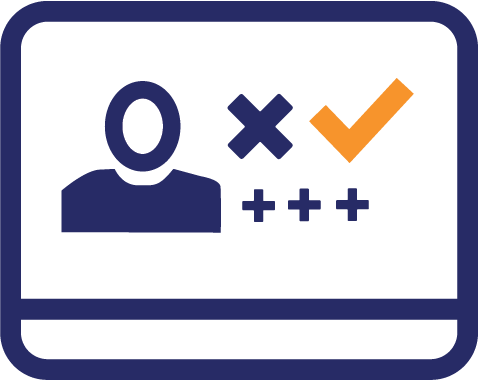1EdTech Glossary

Key terms and vocabulary.
A | B | C | D | E | F | G | H | I | J | K | L | M | N | O | P | Q | R | S | T | U | V | W | X | Y | Z | ALL
P |
|---|
ProfileThis is the product produced by the process of specification Profiling. A Profile of a 1EdTech specification consists of a set of new constraints. In general a 1EdTech specification enables a wide range education and learning workflows, processes and practices. A profile is designed to establish and impose best practices for the target community. A profile MUST only increase constraints i.e. it MUST NOT relax constraints in the base specification. For example the multiplicity of a property in the data model MAY be changed from [1..*] (required and permitting many) to [1..1] (required and only one) but MUST NOT become [0..*] (optional and permitting many). The most common profiling changes include more strict data typing, changes to enumerations, vocabulary changes, prohibition of endpoints and creation of new endpoints. A profile could make use of the extension capabilities to extend the specification to support new features (only possible if the base specification has suitable extension features). The key objective of a profile is to remove, wherever possible, interoperability uncertainty e.g. by removing optionality. For example, a profile in Caliper analytics term that means a grouping of Caliper events that help to solve for specific learning analytics use cases. | |
ProfilingThis is the process by which a 1EdTech specification is tailored to meet the requirements of a specific community: the community could be a reflection of a market sector, a geographic location, etc. An example of such a community is the Norwegian K-12/Schools for whom a profile of the 1EdTech OneRoster 1.2 specification has been created. The process of profiling starts with the corresponding base specification and defines a set of new constraints to make the subsequent modified specification better fit the requirements of the target community. Once the profile has been defined, the next step is to create the corresponding Conformance Test Systems and Certification process for that profile: these will be modified versions of the equivalents created for the base specification. It is recommended that profiling is undertaken within 1EdTech so that the 1EdTech model driven specification tools can be used. | |
Q |
|---|
QTI ItemThis is the XML structure, defined in QTI, that represents the question presented in an online test. The term 'Item' is used because the corresponding XML-instance contain more than just the information to present the question to the learner. It also includes: the response processing to determine if the answer is correct or not; the set of scores to be assigned to the learner and the rules for aggregating these scores; the alternative information to be rendered according to the accessibility needs and preferences of the learner; information to be presented as a hint. | |
QTI PackageThis is the zip file that contains the QTI artifacts (QTI Test, QTI-Sections, etc.) and all of the related assets (images, video, etc.). A QTI Package is a formal profile of the 1EdTech Content Packaging specification. A QTI Package MUST contain the 'imsmanifest.xml' file which is the manifest of the set of files and the metadata for all of those files. | |
QTI SectionThis is the structure used in the QTI specification to collect together QTI Items and child QTI Sections (this is the structure that enables the construction of complex hierarchical testing structures). QTI Sections are used to create different types of collections. A collection could consist of Items and Sections that have some pedagogic coherence. Alternatively they could have some relevance to the sequencing of the next Item to be prevented (for adaptive testing). The collection could also be for commercial reasons only. | |
QTI Test-PartThis is the XML structure define in versions 2.1 and later of the QTI specifications. A QTI Test is composed of one or more QTI Test-Parts. Each QTI Test-Part MUST contain at least one QTI Section. Typically, QTI Test-Parts are used for administrative purposes e.g. the full test may have several separately scheduled delivery sessions and so each session would be expressed as a QTI Test-Part. | |
Question & Test Interoperability (QTI)Question and Test Interoperability (QTI)- the exchange of item, test and results data between authoring tools, item banks, test construction tools, learning systems and assessment delivery systems, including accessible assessments. Example: We will be able to move our digital assessments to the new platform because both systems use the QTI standard.
1EdTech has developed two tightly connected standards that the assessment community worldwide is using to improve learning. The first is QTI (Question and Test Interoperability) and the second is APIP® (Accessible Portable Item Protocol®). QTI enables the exchange of a wide range of rich questions and tests. QTI enables testing from formative quizzes to formal summative high stakes tests. And it allows all kinds of data to be transmitted between authoring tools, item banks, test construction tools, learning systems, and assessment delivery systems, and scoring administrative systems.
There is also a full QTI Terms & Definitions document which defines QTI specific terminology. Learn more about this work: https://www.imsglobal.org/activity/qtiapip | |
R |
|---|
REST APIA synchronous, machine to machine mode for exchanging information. Many 1EdTech standards (including OneRoster) make use of REST API Methodology as their way of exchanging the data in the specifications. | |
Reading ProfileOne of the Metric Profiles defined in the 1EdTech Caliper Standard. The Caliper Reading Profile models activities associated with navigating and viewing digital textual content. Caliper provides several entities representing digital content, including a generic digital along with the document, chapter, page, webpage, message, and frame. | |

